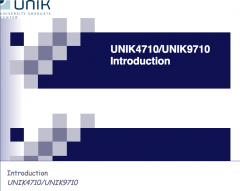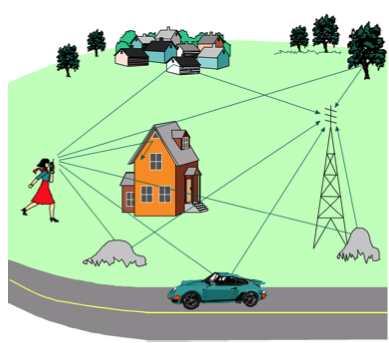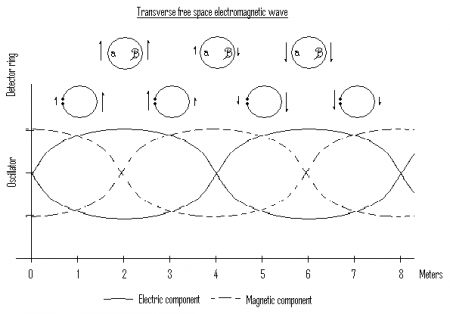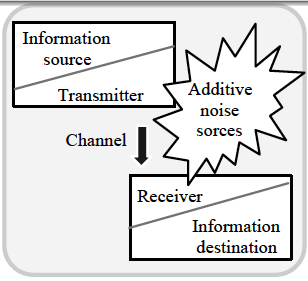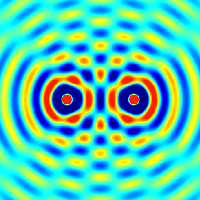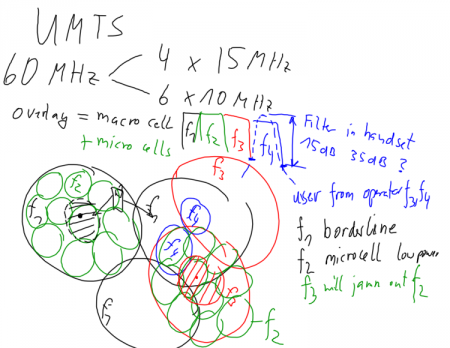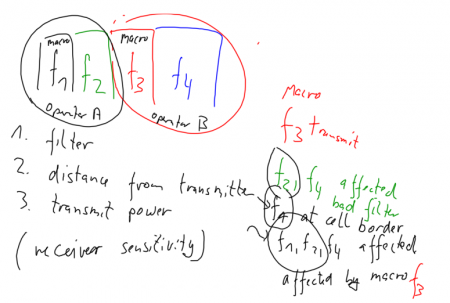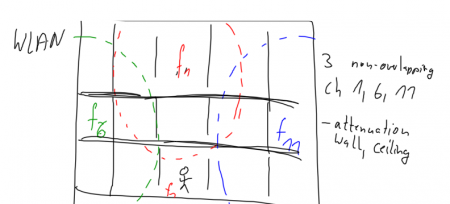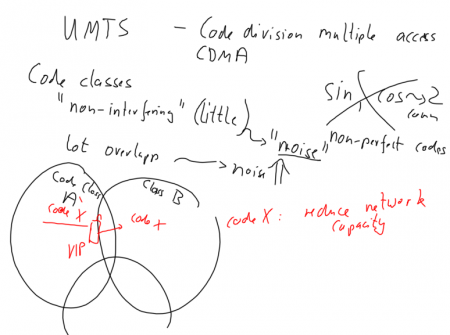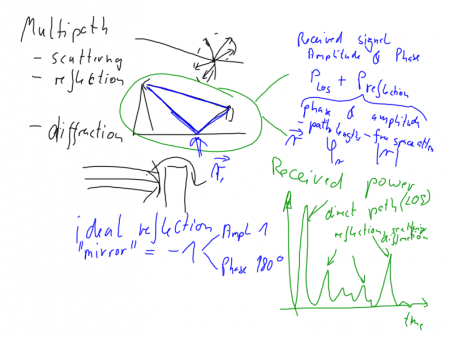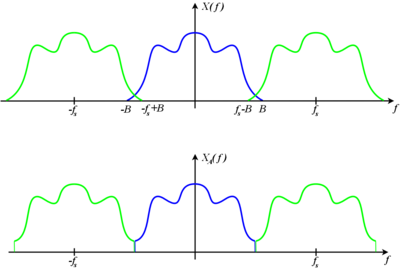Basics of Communication (A1-A3)
| Wiki for ITS | ||||||
|---|---|---|---|---|---|---|
|
Basics of Communication (A1-A3)
| Course | UNIK4700, UNIK9700 |
|---|---|
| Title | Basics of Communication and Assignments |
| Lecture date | 2013/09/10 1315-1600 h |
| presented | by Josef Noll |
| Objective | The objective of this lecture is to explain the principles of radio communication |
| Learning outcomes | What will we learn today
|
| Pensum (read before) | Read before: |
| References (further info) | References:
A Practical Evaluation of Radio Signal Strength: Propagation characteristics of wireless channels: |
| Keywords | SNR, Transmit Power, Scattering, Reflection, Diffraction |
this page was created by Special:FormEdit/Lecture, and can be edited by Special:FormEdit/Lecture/Basics of Communication (A1-A3).
Test yourself, answer these questions
- What factors affect Wireless signal strength?
- Explain the meaning of the term diffraction
- How is diffraction used for radio communications?
- What is the difference between diffraction and interference?
- What is the difference between Scattering and Diffraction?
- What is non line of sight (NLOS)?
- Does WiMAX possess NLOS capability?
- How is UMTS different from current second generation networks?
Lecture notes
earlier notes
- Media:UNIK4700-L2H12.pdf
- Media:UNIK4700_radio.pdf
- Video: mms://lux.unik.no/UNIK4700-JN/UNIK-20120907.wmv
- Title
- UNIK4700/UNIK9700 Introduction to radio propagation
- Author
- Josef Noll,
- Footer
- Basics of Communication (A1-A3)
- Subfooter
- UNIK4700/UNIK9700
⌘ UNIK4700 Radio and Mobility
Lecture 2: Basics of communications
⌘ Topics for programming
|
Propagation Models
Capacity and range
|
System parameters
Mobile/wireless communications
|
⌘ Expectations
- select papers -> list of 2 selected papers to Josef (email)
- UiOLibrary how to use IEEE, ACM and other library information to search for papers
- you are able to search without VPN, but for printout of .pdf you need someone with access (Knut, Sarfraz)
- Alternative: scholar.google.com
- starting point: literature list of UNIK4700
- prepare presentation (typical 35 min), focus
- explain content
- point out strengths and weaknesses
- discuss with colleagues
⌘ Distribution of work
|
open
|
⌘ Principles of radio communication
- radio wave propagation
- Electromagnetic signals
- Nyquist Theorem
- Signal/noise ratio
- Shannon Theorem
- Signal strength
⌘ What will we learn today
- basics of radio communication
- sampling theorem
- typical radio transmission
- what effects the signal strengths
⌘ Heinrich Hertz - Radiowave propagation
Basics of wave propagation:
- The variation of an electrical field creates a magnetic field
- The variation of a magnetic field creates an electrical field
⌘ Electromagnetic channel
The radio channel is always affected by noise, which restricts the information flow to the receiver
[Source:Neelakanta et. al., Fig1.2]
⌘ Sources of noise
- Electronic parts of transmitter and receiver (components)
- Spurious electromagnetics (lines radiating on the chip)
- Fluctuations in power (switching CMOS circuits)
Radio
- In-band interference
- out-of band interference, e.g. GSM/NMT interference
- radio channel, e.g. scattering, multi-path
[Source:Wikipedia, "interference"]
Figure: Noise floor in a receiver
- further explanations: Telektronikk 4/95, Rækken and Løvnes, Multipath propagation
Comments
- in-band: a source having the same signal
- out-of-band: modulations/filters which are not perfect
]] [[File:Inband-outofband.png|450px|right|Figure: In-band (top) and out-of-band interference (bottom)
explain Fourier-transform and overlap
The capacity of a system consists of both the cell capacity (depending mainly on OSI layer 1-3) and on network design, meaning: how much interference do I get from other cells.
In a network where the available 60 MHz in the UMTS band are distributed to 6 operators, each operator will only have 2x 10 MHz available for operation, which typically means that one frequency block (5MHz) will be used for micro-cells and the other frequency block (5 Unik/MHz) will be used for macro-cells.
The amount of interference will depend on
- the filter characteristics of the handset ( check separation)
- the distance from the transmitter
- the transmit power
Receiver sensitivity might play a role, but is considered as being constant in the selected frequency band.
see also: Media:UMTS9902Planning.ppt
802.11b has only three non-overlapping channels, ch 1, 6, and 11. In a normal business building radio waves will propagate not only along one floor, but also through the roof/floor. The visibility of WLAN will make it necessary to plan the frequencies in order to support the person on the ground floor with wireless access.
In UMTS coverage and capacity can be adopted not only through the power level of the transmitting unit, but also through the selection of codes. If the same code or code-class is selected in neighbouring cells, a simulaneous connection to the mobile phone can be achieved. This will increase the coverage (why?) but decrease the total capacity of the system (why?)
⌘ Electromagnetic signals
- Prerequisite: Ohm's law, current, dielectric constant
, conductivity
- "Pappa, what is voltage?"
- Alternating electric and magnetic field
- Direction of wave from "right-hand rule"
[Source: Wikipedia]
⌘ Maxwell's Equation in a source free environment
Source free environment and free space:
where div is a scalar function
and curl is a vector function
[Source: Wikipedia]
⌘ Wave equation
Taking the curl of Maxwell's equation
yields the wave equation:
with m/s
[Source: Wikipedia]
⌘ Homogeneous electromagnetic wave
single frequency
,
,
[Source: Wikipedia]
where
-
and
so?
-
is the imaginary unit
-
is the angular frequency, [rad/s]
-
is the frequency [1/s]
-
is Euler's formula
with and
room for comments
- What is the difference between a static and a dynamic field
- Develop the relations for a plain wave
- Assume a plane wave:
. Show that
⌘ Boundary conditions
- What is happening on electrical walls, magnetic walls?
Scattering, reflection and diffraction (explain differences) are the three major components in wave propagation. Ideal reflection environments are characterised through
⌘ Nyquist Theorem
- Shannon: If a function
contains no frequencies higher than
[cycles/s], it is completely determinded by giving its ordinates at serires of points spaced
seconds apart
- band-limitation versus time-limitation
- Fourier transform
[source: Shannon, 1948]
⌘ Signal/noise ratio
,
where P is average power
- why talking about noise?
- dB,
- near-far problem
[source: Wikipedia]
⌘ Shannon Theorem
Shannons theorem will be part of next lexture...
⌘ Summary
- radio wave propagation explain
- Electromagnetic signals
- Nyquist Theorem
- Signal/noise ratio
- (Shannon Theorem -> next lecture)
- (Signal strength -> next lecture)
